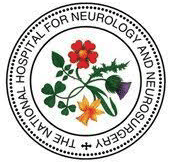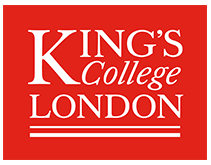Epilepsy
SUMMARY
A major clinical and academic interest throughout my neurological career has been people with Epilepsy.
With colleagues at the Maudsley and King’s College Hospitals I initiated and was first Chairman of a unique multidisciplinary clinical Centre for Epilepsy, for people of all ages with epilepsy (1994-1999) and Director of the first University-based Institute of Epileptology at King’s College London (1994 – 2000), both supported in part by a new UK Charity, The Fund for Epilepsy, of which I was the first Chairman (1992-2004).
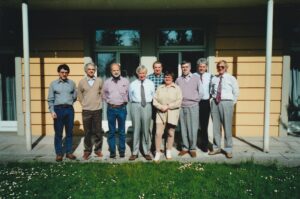
I was elected President of the International League Against Epilepsy (ILAE) from 1993 – 1997, and was the first Chairman of the ILAE/IBE/WHO Global Campaign Against Epilepsy (1997-2001), which is continuing.
With my research team and collaborators I have undertaken studies of: blood level monitoring of anti-epileptic drugs (AEDs); the role of folate, vitamin B12 and one carbon metabolism in AED mechanisms and toxicity; the first studies of monotherapy for newly diagnosed epilepsy; the prognosis of newly-diagnosed epilepsy; epilepsy as a process and a bridge between neurology and psychiatry.
Key references:
Reynolds E.H., Trimble M.R. Epilepsy and Psychiatry. Churchill Livingstone, Edinburgh; 1981
Trimble M.R., Reynolds E.H. What is Epilepsy? The Clinical and Scientific Basis of Epilepsy. Churchill Livingstone, Edinburgh; 1986
Reynolds E.H., A Bridge between Neurology & Psychiatry: Reflections on a career in epilepsy. Epilepsy and Behaviour 2016; 65: 56-59.
CLINICAL SERVICES
South East Regional Epilepsy Clinic
Epilepsy has been a common but hidden, stigmatised and neglected problem in children and adults of all ages in developed and developing countries. In the UK in the 1970s there were only 5 epilepsy clinics. At that time, in comparison, people with diabetes, which has a similar prevalence, had 8 diabetic clinics in the South East Thames region alone. In the late 1970s I established at King’s College Hospital, in collaboration with Professor Euan Ross, Professor of Community Paediatrics, the first Regional Epilepsy Clinic in the UK for adults and children. Within a decade we were seeing over 1,500 patients a year, 50% from the South East region, 30% locally, and 20% nationally. Initially set up with research funds it was eventually supported in the late 1980s by South East Thames NHS funding.

Multidisciplinary Centre for Epilepsy
In 1992 I chaired an initiative by a group of 10 colleagues with a special interest in epilepsy from all the institutions on Denmark Hill, i.e. the Maudsley and King’s College Hospitals, the Institute of Psychiatry, and King’s College School of Medicine, which established the UK’s first comprehensive multidisciplinary Clinical Centre for Epilepsy. It was formally opened by the Minister of Health, John Bowis OBE, at the Maudsley Hospital in July 1994 and was transferred to King’s College Hospital, in association with a new Neurosciences Centre for the South East, in the reorganisation of London medicine in 1995. It provides a unique service for children and adults with epilepsy, including paediatric and adult neurology, neurosurgery, neuropsychiatry, specialist nursing and counselling, and all the necessary supporting disciplines in neurophysiology, neuro-imaging, neuropsychology and neuropathology. I served as first Chairman from 1994 to 1999.
RESEARCH AND TEACHING
The Institute of Epileptology of Kings College
The above initiative, which I chaired in association with 10 colleagues and which led to the Centre for Epilepsy, also established the world’s first academic Institute of Epileptology at King’s College, University of London, again supported by all the same parent institutions across Denmark Hill.
This virtual Institute was formally launched by the Secretary of State for Health, Virginia Bottomley, and Minister of Health, John Bowis, at the House of Commons and at King’s College in the Strand in November 1994. I served as first Director from 1994 to 2000.
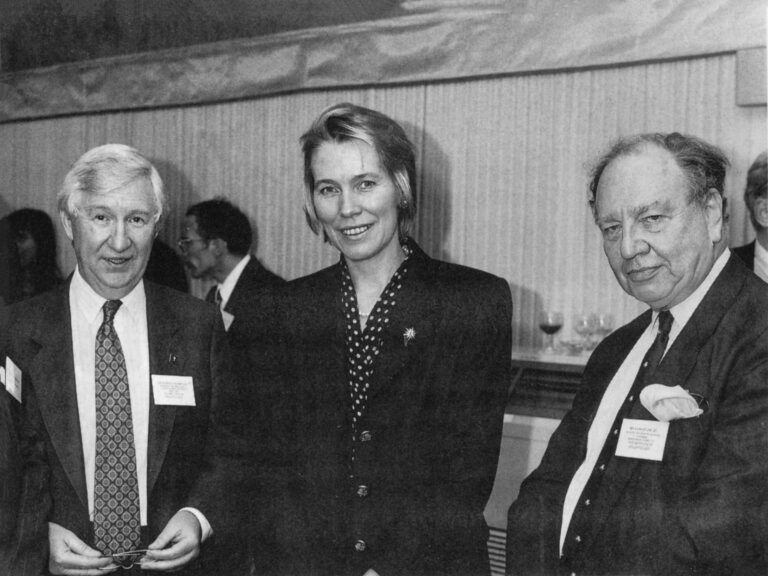
Image and Video of the Launch of the Institute of Epileptology, King’s College, University of London, House of Lords, November 1994.
EHR (Director) with Virginia Bottomley, Secretary of State for Health, and Evan Stone Q.C. (Chairman)
The Epilepsy Group behind this initiative had already been awarded an alpha plus rating by the independent Peckham Review of London University Research in 1993. The Institute coordinated and supported multidisciplinary research on almost all aspects of epilepsy, including: basic science, especially neurochemistry, molecular biology and genetics; basic and clinical neurophysiology; neuroimaging; neuropsychology; social, epidemiological and health services research in relation to all the clinical disciplines in Epilepsy at the Centre for Epilepsy.
The Institute also established the first MSc degree course in Epileptology in 1995. It became one of the most successful of King’s College MSc courses, attracting up to 25 post-graduate students a year from the UK, Europe, the Middle East and Africa, training a new generation of epileptologists.
Key reference:
Reynolds E.H. The Institute of Epileptology of King’s College, University of London. Epilepsia 1995; 36 (supplement 1): S4-7
The Fund for Epilepsy
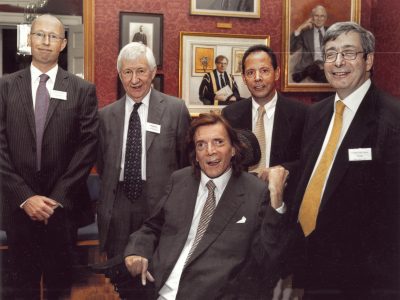
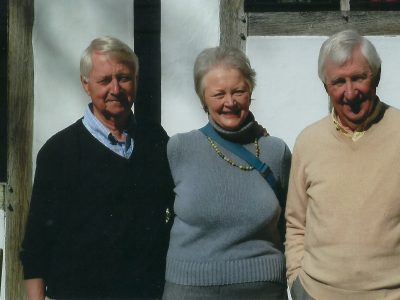
The above initiatives for a clinical Centre and academic Institute was supported from the beginning by a new Charity, the Fund for Epilepsy (registered no. 1015822), of which I was founding Chairman from 1992 to 2004. With the help of dynamic Trust Fund Secretary, Jane Sykes in Halifax, Yorkshire, together with influential lay trustees (especially Evan Stone QC and John Lawson, Financial Advisor) and influential political patrons (especially John Bowis, William Hague and Lord Tonypandy) we raised approximately £5,000,000 for research at the Institute of Epileptology by 2004, including major donations by the King of Saudi Arabia and Paul Getty iii, the latter helping to establish a Chair of Epileptology at the Institute of Epileptology at King’s College.
My own epilepsy research interests
Antiepileptic drugs and folate metabolism
My epilepsy research began within a few months of starting my neurological training at the National Hospital in 1963, when I saw 2 patients with AED-induced megaloblastic anaemia. In collaboration with Dr. I. Chanarin, Consultant Haematologist at the nearby St. Mary’s Hospital, we soon found that the majority of patients with chronic epilepsy had low serum and cerebrospinal fluid (CSF) folate levels related to treatment with phenytoin and the barbiturates, phenobarbitone and primidone. During the next 3 years of my neurological training I followed 26 of these patients on folic acid therapy. To my surprise, it gradually became apparent that the vitamin was having a positive effect in most on their mood and mental state, but paradoxically seemed to increase seizure frequency in some. These observations were controversial at the time and contrary to the prevailing view that folic acid could not be beneficial to the nervous system as it was well known that the vitamin was harmful to the nervous system in the presence of vitamin B12 deficiency. Even the convulsant properties of the vitamin were a novelty, but it has since been consistently confirmed experimentally that folate derivatives are epileptogenic and can be utilised in animal models of epilepsy. Wellcome Laboratories (now GSK) took up my “antifolate equals antiepileptic” hypothesis, and this led to the development of Lamotrigine.
It has subsequently become apparent that other newer AEDs, including carbamazepine and sodium valproate, interfere with folate and one-carbon metabolism in different ways and this remains a field of active interest in AED mechanisms and toxicity.
This initial research of mine into AEDs and folate stimulated a career-long interest in the field of folate, vitamin B12 and one-carbon metabolism in neurology and psychiatry and is discussed in the Section on Metabolic Diseases of the Nervous System.
Key references:
Reynolds E.H. Mental effects of anticonvulsant drugs and folate metabolism. Brain 1968; 91:197-214
Reynolds E.H. Chronic antiepileptic toxicity: a review. Epilepsia 1975; 16: 319-352
Reynolds E.H., Green R. Valproate and folate: congenital and developmental risks. Epilepsy and Behaviour 2020; 108: 107068
Reynolds E.H. Antiepileptic drugs, folate and one carbon metabolism revisited. Epilepsy and behaviour 112 (2020) 107336
Blood level monitoring of AEDs
My early folate interest also led to collaboration with Dr. Peter Lascelles at the National Hospital in introducing blood level monitoring of AEDs for the first time in the UK in the mid-1960s, encouraged by the work of F. Buchthal in Copenhagen and H. Kutt in New York. This in turn opened up for me the hitherto neglected field of chronic toxicity of AEDs, often associated with rampant polytherapy. AED monitoring studies with my team at King’s in the 1970s revealed much unnecessary polytherapy in chronic patients and the potential for monotherapy in 70 to 80% of newly-diagnosed patients with epilepsy. We also studied previously overlooked short-term and long-term adverse effects of AEDs on cognitive function, mood and behaviour and their contribution to some psychiatric disorders associated with epilepsy.
The question then arose: which of several new or old AEDs was the drug of choice for different epilepsy syndromes in newly diagnosed patients? Supported by the Medical Research Council during the 1980s, I led large-scale multi-centre comparative monotherapy trials of phenobarbitone, phenytoin, carbamazepine and sodium valproate for 2 to 5 years in adults and children. Like the simultaneous VA studies in the USA led by my Yale Colleague, Professor Richard Mattson, we found no differences in efficacy but some differences in toxicity which is therefore a greater influence on choice.
Despite the multiple new AEDs that have emerged in the last 25 years, there is still no clear answer to the question whether a patient whose seizures do not respond to optimum monotherapy should be treated by adding a second AED or by switching to an alternative monotherapy. Epileptologists, neurologists and physicians remain bewildered by the number of individual drugs and potential drug combinations available in affluent countries. Furthermore the marketing of these new drugs has been associated with the unwise abandonment of blood level monitoring so that the decline in polytherapy in the 1970s and 1980s has since been reversed.
Key references:
Lascelles P.T., Kocen R.S., Reynolds E.H. The distribution of plasma phenytoin levels in epileptic patients. J. Neurol.Neurosurg. Psychiat. 1970; 33: 501-505
Reynolds E.H., Shorvon S.D. Monotherapy or polytherapy for epilepsy? Epilepsia 1981; 22: 1-10.
Heller A.J., Chesterman P., Elwes R.D.C., Crawford P., Chadwick D., Johnson A.L., Reynolds E.H. Phenobarbitone, Phenytoin, Carbamazapine or Sodium Valproate for newly diagnosed adult epilepsy: a ramdonised comparative monotherapy trial. J Neurol Neurosurg Psychiat 1995; 58: 44-50.
The early treatment and prognosis of epilepsy
Prior to our studies of newly-diagnosed patients with epilepsy at King’s in the mid-1970s, all previous clinical trials had been in patients with chronic epilepsy. The surprisingly good outcome on monotherapy in our new patients, long since confirmed, raised interesting questions about why seizures in the minority of patients with epilepsy become intractable. Several of the factors having an adverse influence on prognosis were and are well known, such as brain lesions, psychological disturbances and social disadvantages. The most important factor in our prospective monotherapy trials was the number of seizures prior to treatment. This raised again the question of : (1) whether seizures beget further seizures? and (2) whether early treatment would improve long-term prognosis? Do our AEDs merely suppress brain electrical and chemical discharges, or do they, as implied by Gowers, ‘arrest’ the evolution or propensity to further seizure discharges? These important and long-standing issues in the management of epilepsy syndromes still require clarification today. It seems possible that there are competing processes in the brain in between seizures which facilitate either relapse or remission of epilepsy and about which we have little understanding.
Key references:
Reynolds E.H., Elwes R.D.C., Shorvon S.D. Why does epilepsy become intractable? Prevention of chronic epilepsy. Lancet 1983; 2: 952-954
Reynolds E.H., The early treatment and prognosis of epilepsy. Epilepsia 1987; 28: 97-106
NATIONAL AND INTERNATIONAL ACTIVITIES
As my clinical and academic career evolved in the 1960s and 1970s I became increasingly aware of the scale of the problems of people with epilepsy, locally and nationally. These included the psychological and social dimensions; the hidden, neglected, and stigmatised nature of the disorder; the lack of resources for services, research and teaching; the low public visibility of both the disorder and the epilepsy movement; and the consequent lack of political action. This led to the Fund for Epilepsy, the Centre for Epilepsy and the Institute of Epileptology already described above, where I saw and was grateful for the influence of political support, for example that of the Secretary of State for Health and the Minister of Health, Virginia Bottomley and John Bowis respectively, as well as the influence of trustees, donors and supporters.
At the national level I served on committees of the British Epilepsy Association and as Secretary of the MRC co-ordinating group on epilepsy. I also served as Secretary (1979- 1984) and President (1993-1996) of the British Chapter of the ILAE. In the latter capacity I led a consortium of all the UK Epilepsy Charities, supported by the All-Party Parliamentary Group on Epilepsy, in a bid to the Millenium Commission, to establish a National Centre for Epilepsy. The application did not succeed but it did lead to unprecedented collaboration between the various epilepsy charities.
President of the ILAE and Chairman of the ILAE/IBE/WHO Global Campaign against Epilepsy
My first involvement with the global ILAE was as Secretary of the ILAE Commission on AEDs (1974-1977). I was later privileged to be elected second Vice-President (1989-1993) and then President of ILAE (1993-1997).
During my Presidency the ILAE grew exponentially from 40 to 62 national chapters. I initiated for the first time Annual Reports and a quarterly newsletter, Epigraph, to improve communications in a rapidly expanding organisation.
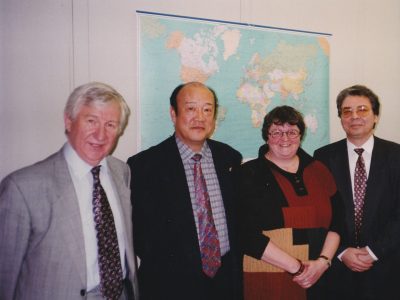
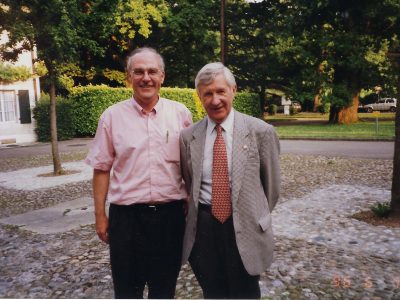
The ILAE and the International Bureau for Epilepsy (IBE) are among many global NGOs affiliated to WHO. Influenced by my political and advocacy experience with the King’s Centre, Institute and Charity in the UK it occurred to me that a partnership between the ILAE (professional), the IBE (patients/public), and the WHO (political) could be a very powerful one for addressing the needs of millions of people with this universal but misunderstood and neglected disorder, especially in developing countries where the treatment gap varied between 60 and 98%.
I was grateful that the leadership of IBE and WHO endorsed this concept. Following a conference on ‘Epilepsy in Developing Countries’ in Geneva in June 1996, the ILAE/IBE/WHO Global Campaign against Epilepsy ‘Out of the Shadows’ was launched in Geneva and at the Dublin International Congress in the summer of 1997.
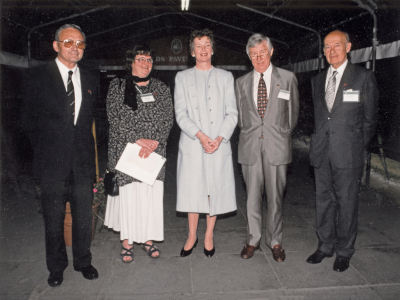
I was privileged to serve as the first Chairman of the Campaign which included a programme of global, regional and national initiatives. The strategic aims of the Campaign were: (1) to raise public and political awareness and understanding of epilepsy (phase 1) and (2) Demonstration Projects in developing countries, notably China, to encourage Departments of Health in all countries to promote the needs, treatment, services and care of people with epilepsy nationally. By the time of the launch of the second phase of the Campaign in Geneva in February 2001, the WHO had raised the status of the Campaign to its highest level. A speech by the then Director General of WHO, Dr. Gro Harlem Brundtland, was a milestone in the social history of epilepsy.

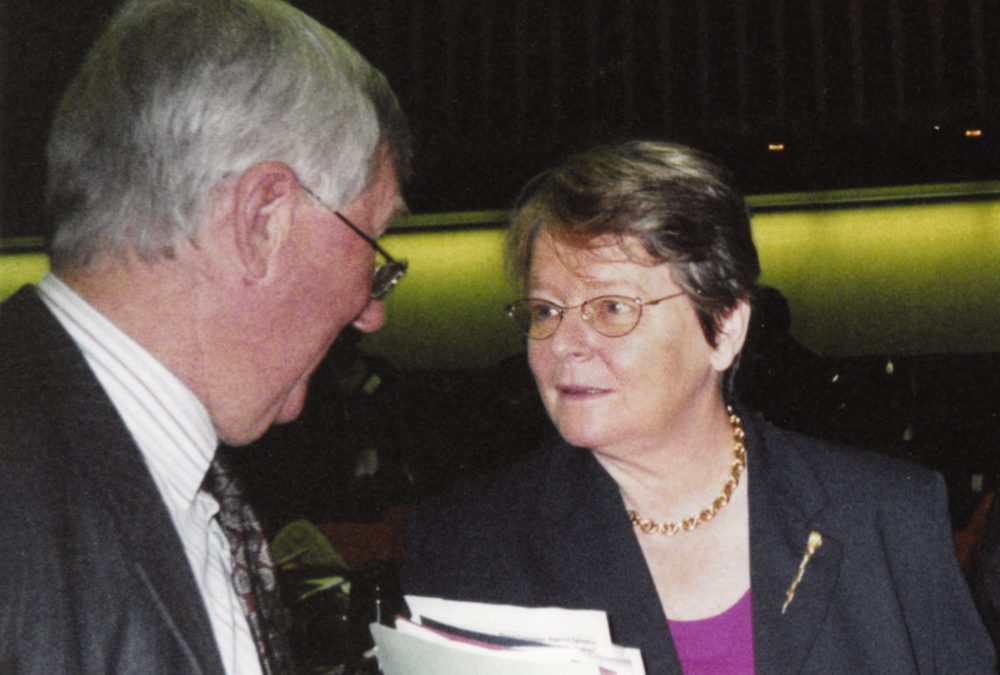
The Campaign has since been gathering momentum around the world and in May 2015 the General Assembly of the WHO unanimously approved Resolution EB136/SR/14 which urges all member states to develop national health care plans for epilepsy management, particularly in low and middle-income countries, thus boosting the final objective of the Campaign. More recently the Campaign has joined forces with the World Federation of Neurology and other Neuroscience NGOs. Stimulated by the success of the ILAE/IBE/WHO Global Campaign against Epilepsy, in 2022 the WHO General Assembly approved a new Resolution 73.10 promoting a Global Action Plan for Epilepsy and Other Neurological Disorders.
3 Presidential Reports were published during my Presidency of ILAE, 1993-1997:
- ILAE – A Message from the President of the International League Against Epilepsia
- ILAE – President’s Mid-term Report
- ILAE – President’s Report (1993-1997)
Key references:
Reynolds E.H. ILAE/IBE/WHO Global Campaign ‘Out of the shadows’: Global and regional developments. Epilepsia 2001; 42: 1094-1100
Reynolds E.H., Editor. Epilepsy in the world: Launch of the second phase of the ILAE/IBE/WHO Global Campaign Against Epilepsy. Epilepsia 2002; 43: supplement 6

